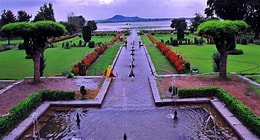 Nishat Garden
Nishat Garden
Nishat garden is the largest one of the Mughal gardens in Kashmir. It is situated on the banks of the picturesque Dal Lake. Also known as "the garden of bliss", the Nishat gardens have the Zabarwan Mountains forming its backdrop. Asaf Khan, the brother of Nur Jahan, designed the Kashmir Nishat Bagh in 1633 AD. Within the garden are ruins of some of the buildings dating back to the Mughal period.
One of them is a double story pavilion enclosed on two sides with latticed windows. There is also a small spring behind the garden, known as Gopi Tirth. It is a source of supply of crystal clear water to the garden. Nishat Bagh is a Mughal garden built on the eastern side of the Dal Lake, close to the Srinagar city in the state of Jammu and Kashmir.
It is the second largest Mughal garden in the Kashmir Valley. The largest in size is the Shalimar Bagh, which is also located on the bank of the Dal Lake. Nishat Bagh is a Hindustani word, which means "Garden of Joy," "Garden of Gladness" and "Garden of Delight.
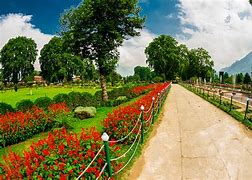 Shalimar garden
Shalimar garden
Shalimar garden is the largest one of the Mughal gardens in Kashmir. It is situated on the banks of the picturesque Dal Lake. Also known as "the garden of bliss", the Nishat gardens have the Zabarwan Mountains forming its backdrop. Nishat Bagh of Kashmir, India, offers a splendid view of the Dal Lake as well as the snow capped Pir Panjal mountain range. The garden has terraces, each representing a different Zodiac sign. There is also a beautiful water channel flowing right in the middle of the garden. Other attractions of the Nishat garden of Kashmir include its blooming flowerbeds, trees, fountains, etc.
Emperor Jehangir got the Shalimar Garden built for his wife Nur Jahan in 1616. A second garden Faiz Baksh, (The Bountiful) was added to it later during the reign of Mughal Emperor Shah Jahan (1628-1658). Covering an area of approximately 539 m by 182 m, the Shalimar garden offers an amazing view over the other gardens, lakes and shallow terraces. Also known as the "garden of love", the Shalimar Mughal Gardens has four terraces, rising one above the other.The fourth terrace of the garden was, at one point of time, reserved for royal ladies. There is also a canal lined with polished stones running through the center of the Shalimar Bagh. The canal is responsible for supplying water to the garden from Harwan.
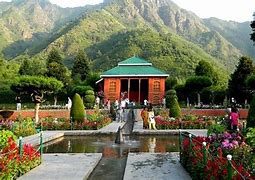 Chashmashahi
Chashmashahi
Chashmashahiis the smallest of the three Mughal gardens of Kashmir. Meaning Royal Spring, this garden measures 108 m by 38 m and is above the Nehru Memorial Park. Mughal Emperor Shah Jahan set up the Kashmir Chashma Shahi Mughal Gardens in 1632 AD.
The garden is quite famous for spring of energizing digestive mineral water inside it. Chasma Shahi Garden of Kashmir, India, offers a striking view of the scenic Dal Lake and the neighboring mountains. The garden has a number of terraces, with several fountains built right through its center.
Apart from the three terraces and fountains, the other attractions of Chashmashahi include an aqueduct and some waterfalls. The water for the fountains comes from the spring. This water then goes through the floor of the pavilion and falls over to the lower terrace, over a polished black stone chute.
Also, a number of fruits, flowers and chinar trees grow in the garden, adding to its appeal. Near the garden is a small shrine, the Chasma Sahibi with a fresh water spring. The Chashmashahi garden is amongst the few others that charge an entrance fee. Recently, a number of extensions were made to the garden.
The top terrace of the Shalimar garden was reserved for the Mughal Emperor and the royal ladies of the court. In fact, the top terrace was the most wonderful one out of all the terraces. The terrace has a tank with a black stone pavilion in its middle. The pavilion, which once served as a banquet hall, is supported by fluted pillars made up of black marble. Other attractions of the Shalimar Bagh of Kashmir include a number of fountains, shaded trees and innumerable varieties of flowers that blossom in spring and autumn. Last but not the least, a light and sound show organized in the garden every evening, during the period of May to October, is simply superb.
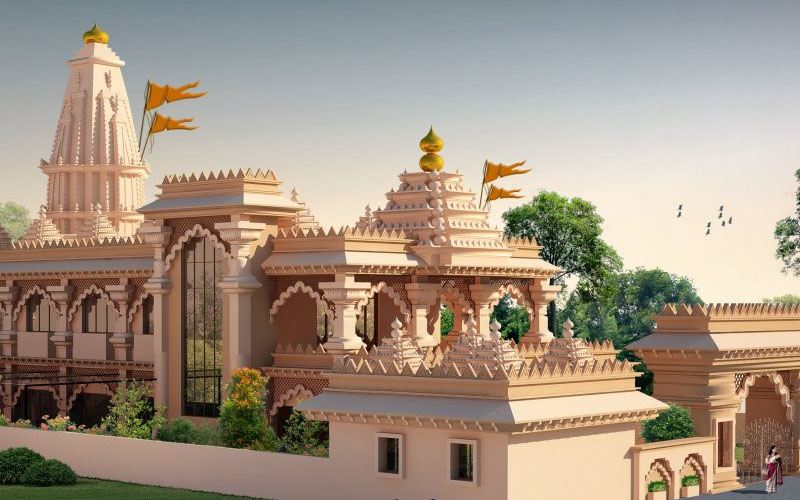 Shankaracharya Temple
Shankaracharya Temple
The Shankaracharya Temple in Srinagar, located on top of the Shankaracharya Hill, is dedicated to Lord Shiva and is one of the oldest shrines in Kashmir. Also known as Jyesteshwara Temple, the temple is named after the great philosopher Shankaracharya who is believed to have visited Srinagar about ten centuries ago. The Shiva Linga he worshipped is located in the temple.
It is believed that Adi Shankaracharya attained spiritual enlightenment at this place and it was after this enlightenment that he went out and formed the four Hindu schools of Advaita, or the philosophy of non-dualism
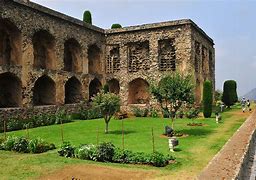 Pari Mahal
Pari Mahal
Pari Mahal The striking group of arched terraces perched higher up on the mountain slope to the west of Chashma-i-Shahi is Pari Mahal, The Fairies Abode, a ruined garden palace, the construction of which is ascribed by tradition to the ill-starred prince Dara Shikoh, who was beheaded in 1659 by order of his brother Aurangzeb. Despite its dilapidated condition, it is easy to determine its principal features; for the garden has, probably owing to its difficulty of access, escaped the restoration to which the other Mughal gardens in Kashmir have been subjected. Pari Mahal differs from other Kashmir gardens in that it does not possess any cascades or water chutes, though it seems probable that there were fountains in the tanks. Water was mainly conducted by underground earthen pipes, though a few traces of open water-courses have also been found. The garden consists of six terraces, with a total length of about 400'. The width of the terraces varies from 179' to 205'. In the uppermost terrace are the ruins of two structures, a barahdari facing the lake, and a water reservoir built against the mountainside. The reservoir was fed from above by a spring, which has since gone dry, and of which the only extant remains are the fragmentary stone conduit and the retaining wall against the hill-side. It is a simple chamber, built of rubble stones in lime, with a facade of two small arches. Internally it measures 11' 3" by 5', and has a recess in each of its walls. Water flowed through an arched drain pierced in the front wall which is now partially blocked up. At each corner of the terrace wall is a flight of steps leading to the lower terrace, measuring 22' 3" by 4' 3" . In the middle of the second terrace exactly in front of the barahdari is a large tank with brick sides measuring 39' 6" by 26' 6". The facade of the retaining wall is ornamented with a series of twenty-one arches, including two of the side-stairs. The arches are built in descending order of height from the centre. Each of them is surmounted by a niche, the height of which increases in proportion to decrease in the height of the arch. The central arch is covered with a coat of fine painted plaster, which seems to have always served as a favourite board for scribbling notices in pen and pencil. Various people have recorded on this the date of their visit to the garden. Among them was the cruel Azad Khan, a Pathan Governor. This terrace seems to have been screened off from the lower court by a parapet wall, which is still extant in parts.
The third terrace is, architecturally, the most interesting portion of the garden. The entrance, which is of the usual Mughal type, arched in front and behind with a central domed chamber, is in the middle of the east wall, and is covered with a coat of fine painted plaster. On either side of it are a series of spacious rooms: the one to its north seems to have been the hammam. Fragments of the water-pipe are still to be seen projecting from a corner of its domed ceiling. Its interior is the most highly decorated of all the rooms in Pari Mahal. On the south side of the entrance are two other chambers, but it is difficult to say to what use they were put. Both of them have pipes inserted into their ceilings, the one nearest the gateway having only one, but the other, two; possibly the latter chamber was used as a kitchen. The western half of the retaining wall has recently fallen; doubtless it also contained chambers similar to those on the other side.